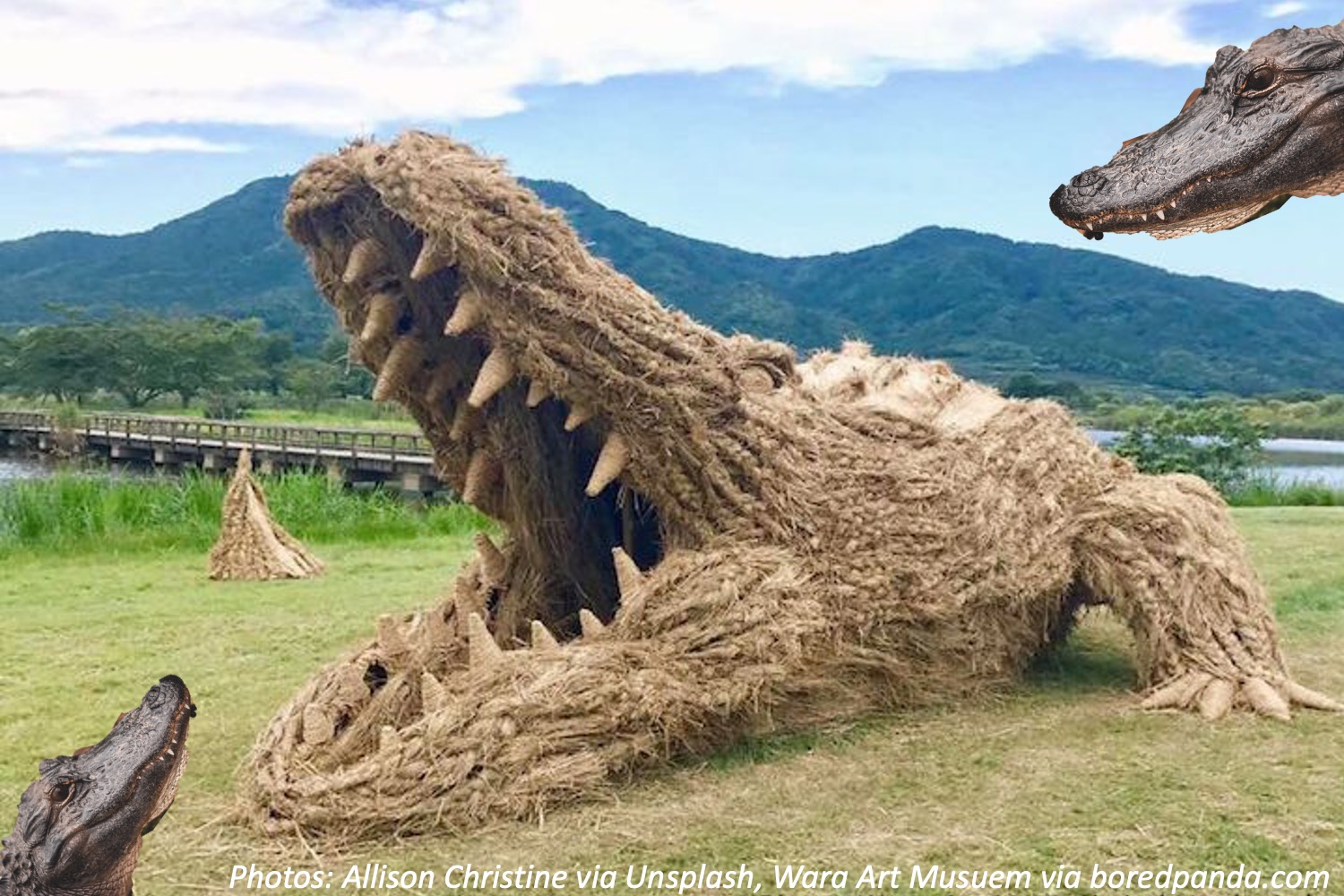Hey, is that a real live monster-sized alligator? Luckily, no. It’s an alligator made of rice straw. Every year in Japan the rice harvest leaves straw that you can’t eat. So people bundle and braid the straw into GIANT animal sculptures. The artists also made a giant lion, gorilla, and other animals – how much straw do they use? What do they weigh? Let’s do the math to find out.
Wee ones: What shape do the alligator’s teeth look like?
Little kids: If the alligator has 17 teeth in its lower jaw and 12 teeth in its top jaw, which jaw has more teeth? Bonus: If the alligator’s top jaw has twice as many big teeth as small teeth and 12 teeth total, how many small teeth does the top jaw have?
Big kids: If there are 5 giant sculptures and each used 200 bales (box-shaped bundles) of straw, how many bales were used? Bonus: If a bale weighs 40 pounds, how much does a 200-bale animal weigh?
The sky’s the limit: A sculpture uses a “mystery number” of bales. We can’t tell you what it is, but if you take that number, add 10, then divide by 10, then square that number (multiply that number by itself), you get 361. What’s the mystery number?
Answers:
Wee ones: A triangle (from the side view), or in 3D, a cone (rounded pointed shape).
Little kids: The lower jaw, since 17 is more than 12. Bonus: 4 small teeth.
Big kids: 1,000 bales. Bonus: 8,000 pounds!
The sky’s the limit: 180 bales. Working backwards, we need the square root of 361, meaning a number that multiplies by itself to get 361. Your clues are that it’s near 400, which is 20×20, and it ends in a 1…only numbers ending in 1 or 9 can multiply by themselves and still get a 1 at the end. That gives us 19. We divided by 10 to get there, which gave us 190; and we added 10 to get there, which gives us 180.



